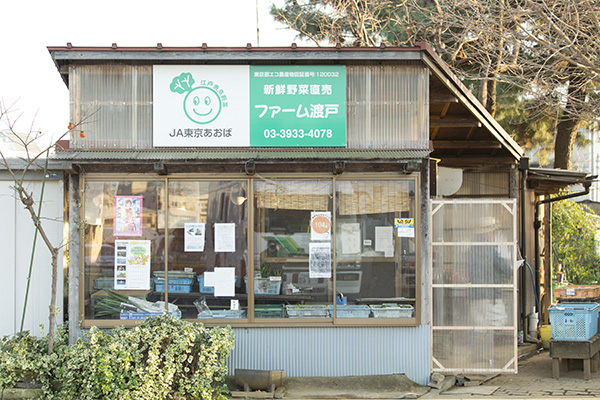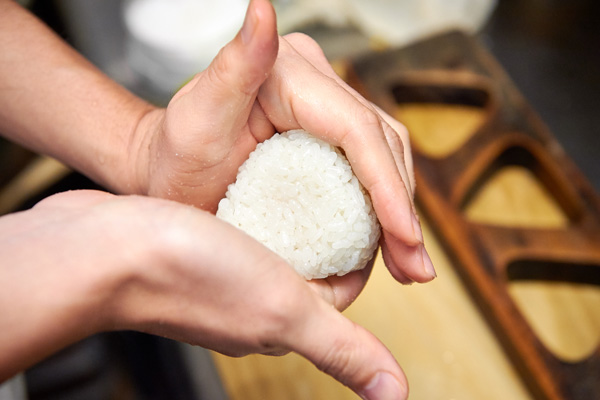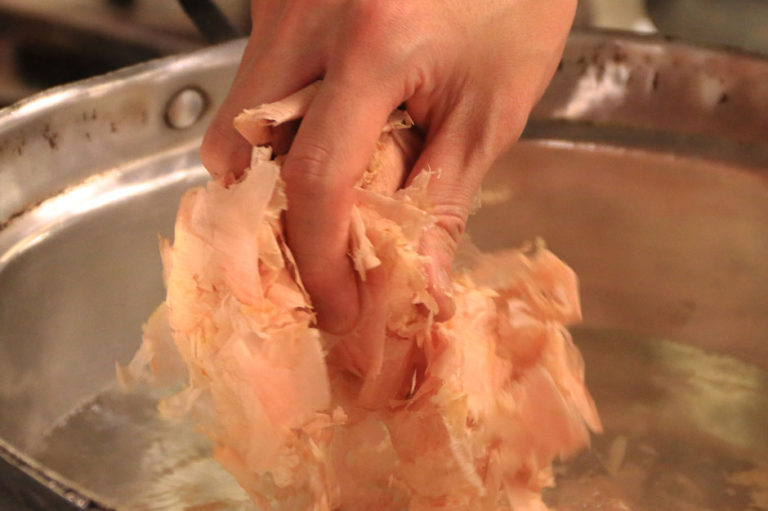Edo Tokyo Vegetables—a Story Told by Vegetables
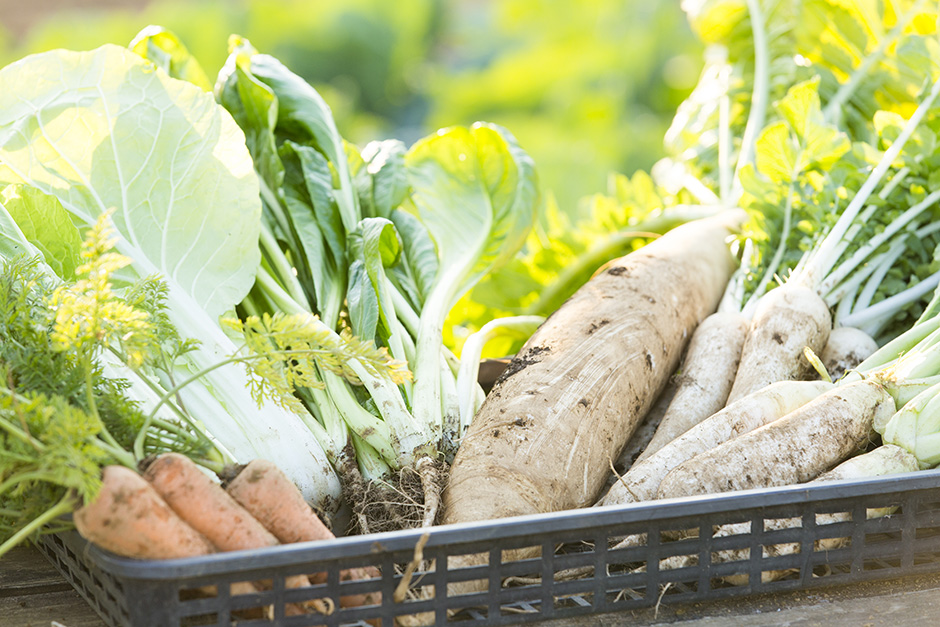
The mega city of Tokyo also has these heirloom vegetables that have been diligently passed down from the Edo period (1603–1868). We went to capture the story of these traditional Edo Tokyo vegetables, which have been recently drawing attention as Tokyo’s soul food.
Traditional, local vegetables that should be passed on to future generations
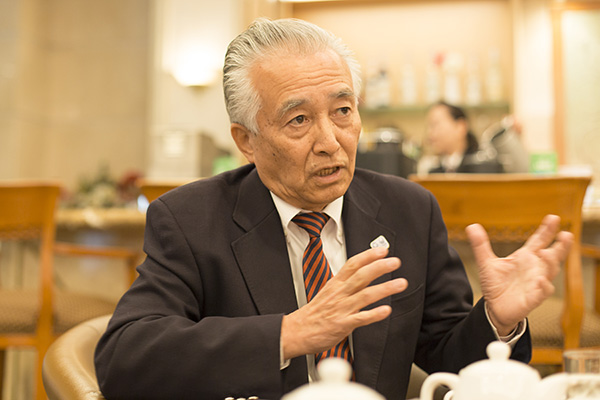
Edo Tokyo vegetables had their beginnings in the early Edo period. At that time, many people from all over Japan went to Edo (what is now Tokyo) to build infrastructure and this rapid population growth led to a lack of fresh vegetables. Under these circumstances, the government prepared plots of land near the city and summoned farmers from the Kansai area near central Japan to grow vegetables in the plots. Feudal lords from across the country went to Tokyo to fulfill their compulsory stay in Tokyo every other year and brought with them seeds from their hometowns, which were then grown in the fields. As such, vegetable seeds from all over Japan gathered in Edo and those which matched Edo’s soil and climate became acclimatized and flourished. This is the origin of Edo Tokyo vegetables.
“Pure-bred varieties are grown by sowing seeds, growing the plants, collecting the seeds and repeating the process. The seeds of Edo Tokyo vegetables have been preserved since the Edo period, so they have a history and culture that hybrid varieties do not have, as they only survive for one generation,”
says Michishige Otake, representative of Edo Tokyo Traditional Vegetable Research Association.
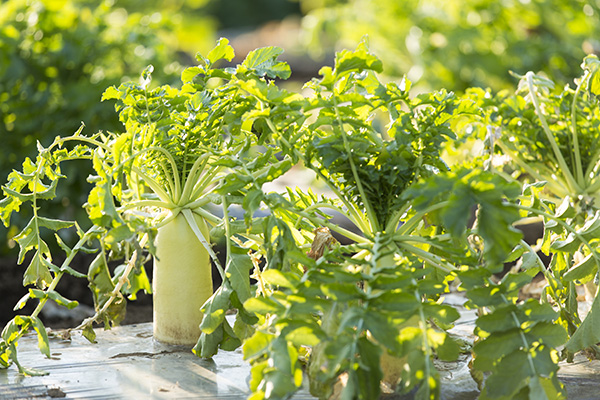
When Otake worked for JA Tokyo Chuokai (the central agricultural co-op of Tokyo) from the 1970s to 1980s, many hybrid vegetable varieties which were more suited for stable supply and mass production began to dominate the market. Agricultural land in Tokyo was also beginning to get converted into residential homes. Otake felt a pressing concern that the Edo Tokyo vegetables may become extinct. Since then, Otake’s life mission has been to revive and promote Edo Tokyo vegetables, visiting farms to obtain seeds and publishing a book about the vegetables, work that he has committed himself to for more than 30 years.
“When I tell locals about the story that comes with each Edo Tokyo vegetable, they become interested. They’re eager to pass on the story, saying “let’s grow some at our primary school,” or “let’s hold a thanksgiving celebration at the Shinto shrine and give out the vegetables to everyone.”
These activities by Otake are steadily bearing fruit. Today, many districts of Tokyo are using Edo Tokyo vegetables as a tool to revive their town.
Pure-bred vegetables usually grow to different sizes, shapes and do not always go by the rules, but that’s why they are attractive, according to Otake.
“By nature, vegetables grow differently depending on climate and soil conditions, so it is natural that they grow differently. Moreover, people do not know what vegetables should really taste like, because of the abundance of hybrid vegetables that have eliminated bitterness and smell. I want to pass on these traditional, natural vegetables to future generations.”
The story told by Edo Tokyo vegetables
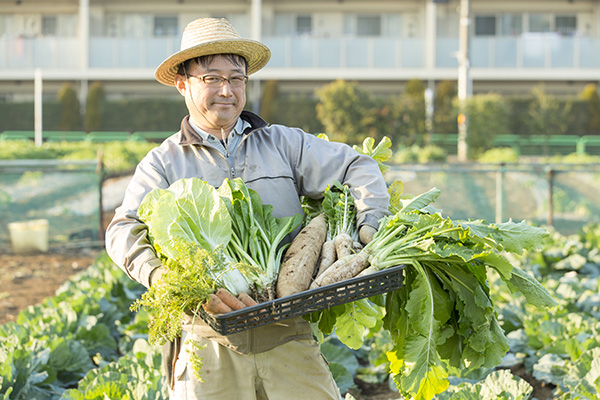
“When growing vegetables, you have to deal with nature. It gets affected by climate and this year we had a lot of disease. It is a lot of hard work”, says Hideyuki Watado, who runs Farm Watado in Heiwadai, Nerima District, to whom we were introduced to by Otake.
In the winter, Watado grows as many as 6 Edo Tokyo vegetable varieties. They are all grown outdoors.
Otake and Watado told us about the features and history of each Edo Tokyo vegetable.
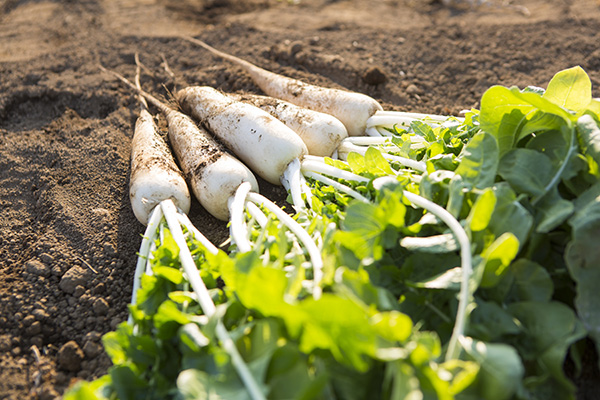
Kameido daikon radish
This radish is said to have been brought into Edo in the early Edo period by farmers from Kansai who moved to what is now called Sunamachi, Koto District with the seeds. The radish then took root in the adjacent town of Kameido.
Apparently, citizens of Edo with a taste for first-of-the season food rushed to buy the radish to boast the fact that they ate it, as the radish was sold in spring, when few green vegetables were available.
Its defining feature, a white stem, is actually a result of mutation that happened at the end of the Edo period. The farms collected the seeds and when they marketed the radish the following year, people said the white was beautiful and stylish, and the radish ended up selling for three times the usual price.
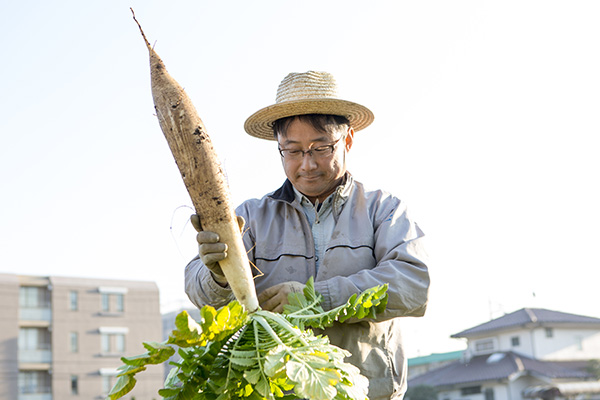
Nerima daikon radish
Nerima daikon radish is said to have come from the Edo period when the 5th shogun, Tsunayoshi Tokugawa, visited Nerima to recuperate from his illness and ordered his men to obtain and grow daikon radishes from seeds found in the Owari region in central Japan.
Nerima’s soil has deep and soft layers of volcanic ash and apparently yielded daikon radishes that were as long as one meter in length.
“Smart Edoites prefer white-necked daikon to today’s green-necked daikon”, says Otake. Apparently, Nerima daikon radish is dense and pungent, but the edge turns into tastiness when cooked.
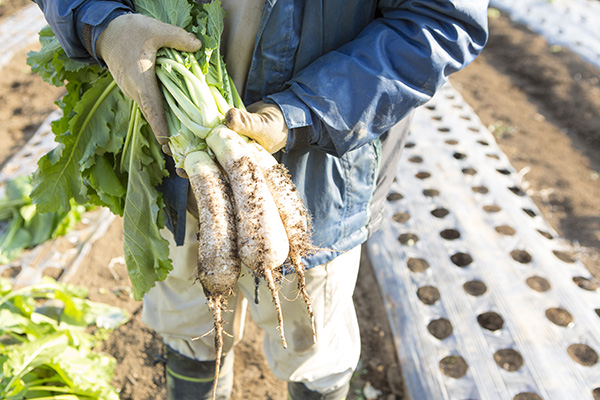
Shinagawa radish
Shinagawa radish, which looks like daikon radish, was grown all over Shinagawa (southern Tokyo) in the Edo period. They were once extinct but were resurrected in 2008. After that, a grocer in Kita Shinagawa introduced the radish to revive the town and now the whole region is united in promoting the radish.
In a contest held annually in December at Shinagawa Shrine, the radish is served to visitors as an ingredient of Shinagawa Soup (with mashed tofu), a regional dish from Kawauchi, Aomori in northern Japan.
This Shinagawa soup comes with a story. In the Edo period, when sailors from Kawauchi crashed their ship off the coast of Edo, fishermen from Shinagawa saved them. The fishermen gave the sailors a warm soup and when the sailors returned to Kawauchi, they named the soup Shinagawa soup and passed on its recipe to their children so as to remember the fishermen’s favor. It was apparently because of this story that people decided to revive Shinagawa soup in Shinagawa.
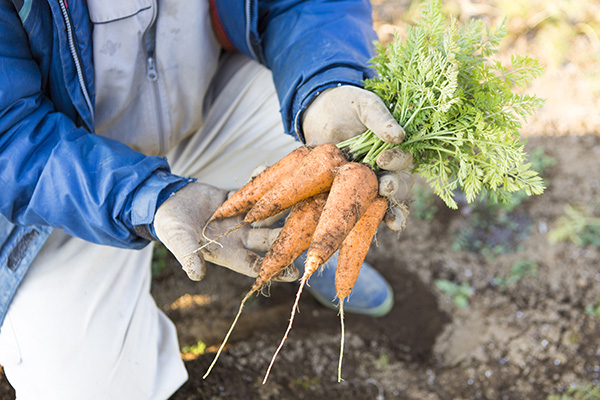
Magome Sansun carrots
Magome Sansun carrots are, just like its name suggests, only about 10 cm long (sansun means about 10 cm in Japanese). Otake says that they are very sweet and tasty. Compared to the carrots we usually see, they are rounder and they look cuter.
In the old days, there were only extremely long carrots in Japan like the one meter long Takinogawa carrots, all of which hailed from the East. But in the early Meiji period (1868–1912), shorter, western varieties were introduced as it was hard work to harvest the long carrots.
In the Showa period (1926–1989), an innovative farmer from Nishi Magome in southern Tokyo crossed the Sunamura Sansun and the Kawasaki Sansun, which were varieties of carrots that were being grown at the time in peripheral areas, and after 10 years of trial and error created a pure-bred variety with a good color and taste. Apparently this is how the Magome Sansun carrots started.
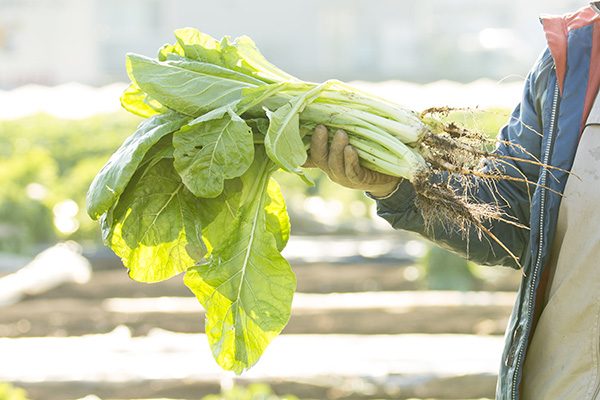
Traditional Japanese mustard spinach
The traditional Japanese mustard spinach, known as komatsuna in Japanese, was named by the 8th shogun, Yoshimune Tokugawa. The shogun went to Komatsu River near the northern parts of Edo for falconry and visited Katori Shrine in Shinkoiwa for a break. He liked the green vegetable that was with the rice cakes in the clear soup he was served, and asked the priest for its name. The priest said: “It is a nameless grass that grows around here.” The shogun then said, using the Komatsu River as inspiration: “Well, then it shall be named komatsuna.”
Otake said that the mustard spinach is less acrid compared to hybrid varieties and because of this, farmers harvested them when they grew to a large size.
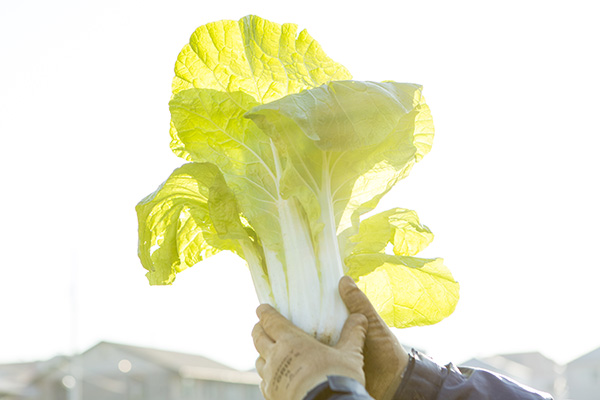
Shintori vegetable
This vegetable is a relatively new variety. Around the mid-1960s, farmers started growing them in large quantities around Edogawa in eastern Tokyo.
Shintori translates to “taking the stem”. The vegetable’s stem used to be taken and used as a premium substitute for Chinese vegetables that had not been imported to Japan at the time, giving it its name.
It has a light taste and can be used just like Chinese lettuce. Watado recommends stir-frying it quickly with oyster sauce, leaves and all.
Passing Edo Tokyo’s legacy onto the future
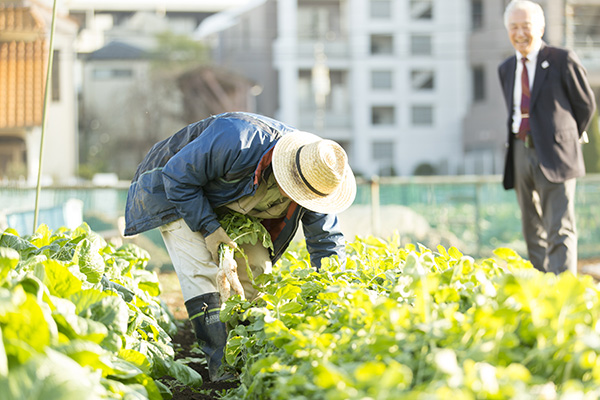
Currently, there are 45 varieties of Edo Tokyo vegetables. They have recently gained more recognition as well as brand power and they are being sold to restaurants in larger quantities than before.
We asked Otake what his next goal is. He said “By the 2020 Tokyo Olympics, we hope to increase Edo Tokyo vegetables to 50 varieties and make them Tokyo’s legacy.”
Watado is also motivated. He says “I want to start growing Shimoyama Chitose lettuce next year.”
It will be very interesting to see what kind of stories Edo Tokyo vegetables will continue to create as a living piece of history.


